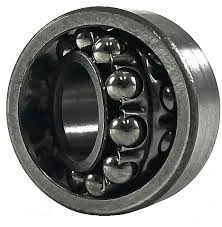
Nov . 10, 2024 01:19 Back to list
Understanding the Applications and Functions of Thrust Bearings in Machinery
What Are Thrust Bearings Used For?
Thrust bearings are critical components in various mechanical systems, designed to support axial loads and provide smooth rotational motion. They play an essential role in industries ranging from automotive to aerospace, manufacturing to robotics. Understanding the applications of thrust bearings helps us appreciate their importance in enhancing the performance and efficiency of machinery.
Definition and Functionality
Thrust bearings are specialized types of bearings that allow for the axial movement of a rotating shaft while supporting axial loads. Unlike radial bearings, which primarily bear loads perpendicular to the axis of rotation, thrust bearings are designed to handle forces that act parallel to the axis. This function is crucial in applications where the rotational elements, such as gears or turbines, exert significant axial loads.
Types of Thrust Bearings
There are several types of thrust bearings, each designed for specific applications and load requirements
1. Thrust Ball Bearings These consist of a set of balls placed between two grooved washers. They are suitable for applications where the loads are low and one-directional. They are commonly used in automotive applications, like in automotive transmissions and gearboxes.
2. Thrust Roller Bearings These can handle higher axial loads than thrust ball bearings. They use cylindrical rollers instead of balls, which allows them to distribute loads better. Thrust roller bearings are often found in construction equipment and heavy machinery.
3. Tapered Roller Bearings Combines radial and axial load capabilities, tapering allows these bearings to handle both types of forces effectively. They are used in applications such as wheel hubs in vehicles, where both radial and axial loads are prevalent.
4. Magnetic Thrust Bearings These are non-contact bearings that use magnetic fields to support loads, eliminating friction and wear. They are increasingly used in advanced applications, such as in high-speed machinery and aerospace.
what are thrust bearings used for

Applications of Thrust Bearings
Thrust bearings are employed in various industries, showcasing their versatility and importance
1. Automotive Industry Thrust bearings are crucial in vehicle transmissions, differentials, and crankshaft assemblies. They support the axial loads generated during acceleration, braking, and turning, ensuring smooth operation and extending the lifespan of components.
2. Industrial Equipment In manufacturing plants, many machines, such as milling machines and lathes, use thrust bearings to support the axial loads from cutting tools and attachments. This support is vital for achieving precision and maintaining operational stability.
3. Aerospace Applications The aviation sector relies on thrust bearings in engines and landing gear systems. These bearings withstand significant loads while maintaining operational integrity at high speeds and varying temperatures.
4. Marine Applications Thrust bearings are also prevalent in ship propulsion systems, supporting the propeller shafts. They help manage the axial thrust generated during operation, contributing to the efficiency and reliability of marine vessels.
5. Robotics In modern robotic systems, thrust bearings are used in joints and actuators, facilitating smooth motion and accurate positioning. They are essential for the functionality of robotic arms and automated assembly lines.
Conclusion
In summary, thrust bearings are indispensable components in many mechanical systems, offering essential support for axial loads across various applications. Their different types, including thrust ball bearings, thrust roller bearings, tapered roller bearings, and magnetic thrust bearings, cater to a broad range of industrial needs. By reducing friction and enhancing stability, thrust bearings significantly improve the performance and longevity of machinery in the automotive, aerospace, industrial, marine, and robotics sectors. As technology advances, the development of specialized thrust bearings will continue to play a crucial role in maintaining efficiency and reliability in numerous applications. Thus, understanding their function is vital for engineers, manufacturers, and anyone involved in the design and maintenance of complex machinery.
Latest news
-
Premium Deep Groove Ball Bearings | High Speed & Reliability
NewsAug.29,2025
-
Durable Scaffolding Clamps - Secure & Reliable Tube Connectors
NewsAug.28,2025
-
Common Failures in Thrust Ball Bearings and Solutions
NewsAug.22,2025
-
How Tapered Roller Bearings Can Take Shock Loads
NewsAug.22,2025
-
Angular Bearings in High-Precision Spindles
NewsAug.22,2025
-
The Impact of Misalignment on Cylindrical Roller Bearing Performance
NewsAug.22,2025
